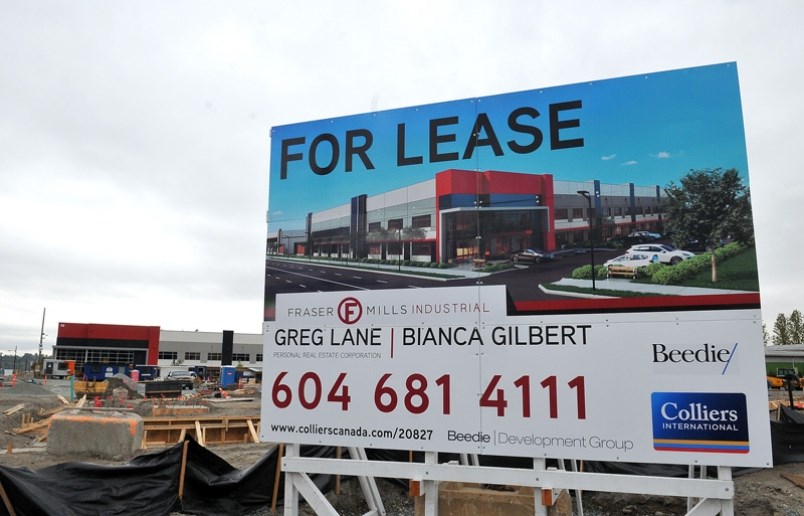While residential real estate values continue to soar in the Tri-Cities, the price squeeze is also being felt in the industrial and commercial markets, according to figures released last week by BC Assessment.
In Coquitlam, for example, where the average residential unit increased in value by 8.8% between July 1, 2016 and July 1, 2017, commercial property prices jumped 24.8% and light industrial rose 18.7% during the same time period.
The results are similar in the rest of the Tri-Cities, the data shows. Port Coquitlam, which had an 11.4% rise in residential values, saw a 19.4% increase for light industrial and 15.7% in commercial. During the same time period, Port Moody, which had an 8.9% increase in average residential land values, saw increases of 19% in light industrial and 23.9% in commercial.
The rise in commercial and industrial land values is tied to the limited supply for those property categories in the Lower Mainland, said Paul Borgo, the acting assessor with BC Assessment.
“It is difficult when you are surrounded by water, mountains and a border,” he said. “That’s supply and demand. The market is strong for that product.”
David Munro, Coquitlam’s manager of economic development, told The Tri-City News that industrial property in the Tri-Cities is increasingly in short supply and he expects the upward price pressures to continue for non-residential land.
“The levels of the increases may change but overall property values have continued to go up,” he said. “I think it will continue to go that way.”
Munro added property owners shouldn’t expect to see their taxes increase at the same rate as their land values. He said if a land owner’s assessed property value rose in line with other properties in their area, the municipal tax increase would be in line with the rest of the neighbourhood.
Currently, Metro Vancouver has a 10-year supply of industrial land, Munro said. When that is exhausted, it is likely that the region will start to see the further densification and intensification of its industrial and commercial properties, he said.
“Once some of those key areas start to fill in, which is happening, intensification of industrial land is the next step,” he said. “We are not quite there yet.”
gmckenna@tricitynews.com
@gmckennaTC



